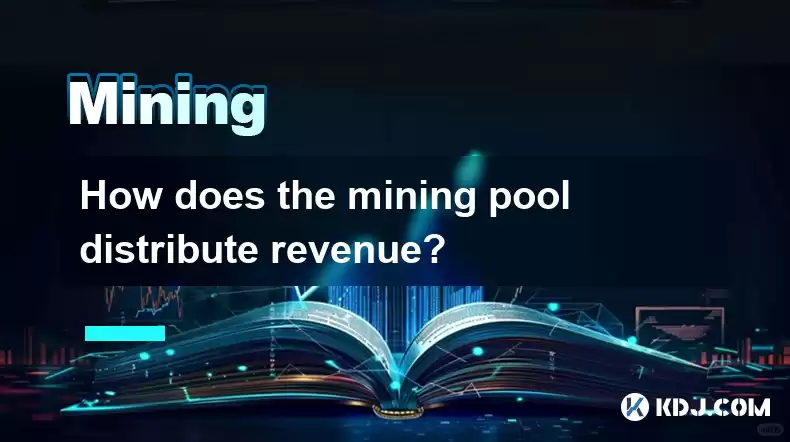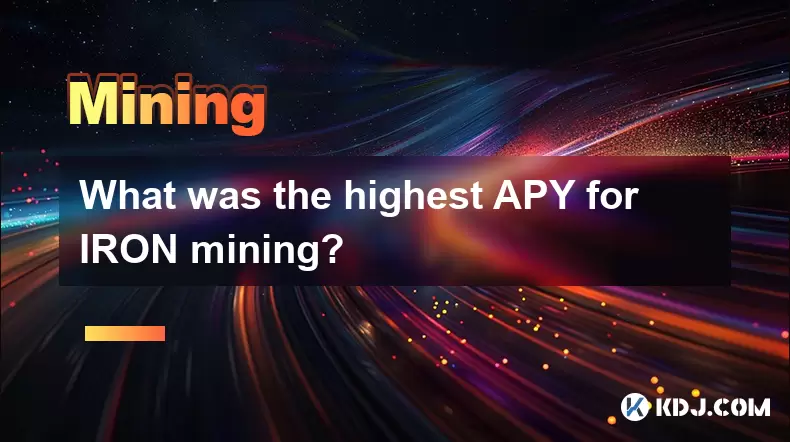-
 Bitcoin
Bitcoin $115000
0.12% -
 Ethereum
Ethereum $3701
4.50% -
 XRP
XRP $3.081
2.99% -
 Tether USDt
Tether USDt $0.0000
-0.01% -
 BNB
BNB $767.9
1.45% -
 Solana
Solana $169.5
3.13% -
 USDC
USDC $0.9999
0.01% -
 Dogecoin
Dogecoin $0.2106
4.30% -
 TRON
TRON $0.3334
1.62% -
 Cardano
Cardano $0.7564
2.54% -
 Stellar
Stellar $0.4165
0.76% -
 Hyperliquid
Hyperliquid $38.75
0.25% -
 Sui
Sui $3.593
3.00% -
 Chainlink
Chainlink $17.08
3.59% -
 Bitcoin Cash
Bitcoin Cash $573.6
4.35% -
 Hedera
Hedera $0.2508
-0.84% -
 Avalanche
Avalanche $23.07
6.46% -
 Ethena USDe
Ethena USDe $1.001
-0.02% -
 Litecoin
Litecoin $120.8
8.17% -
 UNUS SED LEO
UNUS SED LEO $8.943
-0.32% -
 Toncoin
Toncoin $3.400
-5.60% -
 Shiba Inu
Shiba Inu $0.00001255
1.54% -
 Uniswap
Uniswap $9.908
6.32% -
 Polkadot
Polkadot $3.718
2.10% -
 Monero
Monero $303.0
-0.74% -
 Dai
Dai $0.9999
-0.02% -
 Bitget Token
Bitget Token $4.392
0.91% -
 Cronos
Cronos $0.1403
6.31% -
 Pepe
Pepe $0.00001076
1.13% -
 Aave
Aave $267.2
1.80%
How does the mining pool distribute revenue?
Mining pools use various methods like proportional, PPS, score-based, and FPPS to distribute revenue, each affecting miners' earnings and pool stability differently.
Apr 08, 2025 at 04:36 pm

Mining pools play a crucial role in the cryptocurrency ecosystem by allowing individual miners to combine their computational resources to increase their chances of successfully mining a block and earning rewards. The distribution of revenue within a mining pool is a critical aspect that affects the profitability and fairness for its participants. This article will delve into the various methods used by mining pools to distribute revenue, the factors that influence these distributions, and the implications for miners.
Proportional Method
The proportional method is one of the earliest and simplest methods used by mining pools to distribute revenue. In this method, the total reward from a successfully mined block is distributed among all participants based on the proportion of their contributed computational power. For example, if a miner contributed 10% of the total pool's hash rate, they would receive 10% of the block reward.
This method is straightforward and easy to understand, but it has some drawbacks. Miners who join the pool just before a block is found can receive a disproportionately large share of the reward compared to those who have been mining for longer periods. This can lead to what is known as pool hopping, where miners switch between pools to maximize their earnings.
Pay Per Share (PPS) Method
The Pay Per Share (PPS) method addresses some of the issues associated with the proportional method. In PPS, miners are paid a fixed amount for each share they submit to the pool, regardless of whether the pool successfully mines a block. The payment per share is calculated based on the expected revenue of the pool, taking into account the current difficulty and block reward.
This method provides miners with a more predictable income stream, as they are paid for their efforts regardless of the pool's success in mining blocks. However, the pool operator must have sufficient funds to cover these payments, which can be a risk if the pool experiences a streak of bad luck and fails to mine blocks for an extended period.
Score-Based Method
The score-based method is a more complex approach that aims to balance the fairness of the proportional method with the predictability of the PPS method. In this method, each share submitted by a miner is assigned a score based on the time elapsed since the last block was found. Shares submitted shortly after a block is found are given a lower score, while shares submitted after a longer period are given a higher score.
When a block is successfully mined, the total reward is distributed among miners based on the scores of their submitted shares. This method discourages pool hopping by reducing the value of shares submitted immediately after a block is found, thereby rewarding miners who contribute consistently over time.
Full Pay Per Share (FPPS) Method
The Full Pay Per Share (FPPS) method is an extension of the PPS method that also includes transaction fees in the payment calculations. In FPPS, miners are paid a fixed amount per share, similar to PPS, but the payment also includes a portion of the transaction fees collected in the mined block.
This method provides miners with a more comprehensive reward, as it accounts for both the block reward and the transaction fees. However, like PPS, it requires the pool operator to have sufficient funds to cover these payments, which can be a risk if the pool experiences a period of low block rewards.
Transaction Fee Distribution
In addition to the block reward, mining pools also need to consider how to distribute transaction fees. Some pools distribute transaction fees proportionally to the block reward, while others may distribute them separately based on the miners' contributions.
For example, a pool might distribute the block reward using the proportional method and then distribute the transaction fees using the PPS method. This approach allows the pool to provide miners with a more predictable income from transaction fees while still maintaining the fairness of the proportional method for the block reward.
Factors Influencing Revenue Distribution
Several factors can influence how a mining pool distributes its revenue. These include the pool's operational costs, the size and stability of the pool, and the preferences of its miners.
Operational Costs: The pool's operational costs, such as server maintenance and electricity, can affect the amount of revenue available for distribution. Pools with higher operational costs may need to adjust their distribution methods to ensure they remain profitable.
Pool Size and Stability: Larger and more stable pools may have more flexibility in choosing their distribution methods, as they can better predict their revenue and manage their funds. Smaller pools, on the other hand, may need to rely on more conservative methods to ensure they can cover their payments.
Miner Preferences: The preferences of the pool's miners can also play a role in determining the distribution method. Some miners may prefer the predictability of PPS, while others may be willing to take on more risk for the potential of higher rewards with the proportional method.
Implications for Miners
The choice of revenue distribution method can have significant implications for miners. Miners need to consider the potential risks and rewards associated with each method and choose a pool that aligns with their financial goals and risk tolerance.
Predictability vs. Risk: Methods like PPS and FPPS offer more predictable income streams, which can be beneficial for miners who need a steady income. However, these methods may also result in lower overall earnings compared to methods like the proportional method, which can offer higher rewards but with more variability.
Fairness and Pool Hopping: The choice of distribution method can also affect the fairness of the pool and the potential for pool hopping. Methods like the score-based method can help reduce pool hopping by rewarding consistent contributions over time, while methods like the proportional method may be more susceptible to this behavior.
Pool Stability: The stability of the pool and its ability to cover payments is another important consideration. Miners should choose pools that have a strong track record of paying out rewards and managing their funds effectively.
Frequently Asked Questions
Q: How can miners determine which distribution method is best for them?
A: Miners should consider their financial goals and risk tolerance when choosing a distribution method. Those who need a steady income may prefer PPS or FPPS, while those willing to take on more risk for potentially higher rewards may opt for the proportional or score-based methods. It's also important to consider the stability and track record of the pool.
Q: Can miners switch between pools with different distribution methods?
A: Yes, miners can switch between pools with different distribution methods. However, they should be aware of the potential for pool hopping and the impact it can have on their earnings. Some pools may have policies or mechanisms in place to discourage pool hopping.
Q: How do transaction fees affect the revenue distribution in mining pools?
A: Transaction fees can be distributed separately from the block reward or included in the overall revenue distribution. Some pools may use different methods for distributing transaction fees, such as PPS, to provide miners with a more predictable income from these fees.
Q: What are the risks associated with the PPS and FPPS methods for pool operators?
A: The main risk for pool operators using PPS and FPPS methods is the need to have sufficient funds to cover payments to miners, even during periods of low block rewards. If the pool experiences a streak of bad luck and fails to mine blocks, it may struggle to meet its payment obligations, which can lead to financial difficulties.
Disclaimer:info@kdj.com
The information provided is not trading advice. kdj.com does not assume any responsibility for any investments made based on the information provided in this article. Cryptocurrencies are highly volatile and it is highly recommended that you invest with caution after thorough research!
If you believe that the content used on this website infringes your copyright, please contact us immediately (info@kdj.com) and we will delete it promptly.
- Cryptocurrency, Altcoins, and Profit Potential: Navigating the Wild West
- 2025-08-04 14:50:11
- Blue Gold & Crypto: Investing Disruption in Precious Metals
- 2025-08-04 14:30:11
- Japan, Metaplanet, and Bitcoin Acquisition: A New Era of Corporate Treasury?
- 2025-08-04 14:30:11
- Coinbase's Buy Rating & Bitcoin's Bold Future: A Canaccord Genuity Perspective
- 2025-08-04 14:50:11
- Coinbase's Buy Rating Maintained by Rosenblatt Securities: A Deep Dive
- 2025-08-04 14:55:11
- Cryptos, Strategic Choices, High Returns: Navigating the Meme Coin Mania
- 2025-08-04 14:55:11
Related knowledge

What was the highest APY for IRON mining?
Jul 23,2025 at 05:14am
Understanding IRON Token and Its Mining MechanismThe IRON token is a stablecoin that operates within the Iron Finance ecosystem, primarily on blockcha...

What is impermanent loss in IRON pools?
Jul 23,2025 at 09:00am
Understanding Impermanent Loss in the Context of IRON PoolsImpermanent loss is a phenomenon that affects liquidity providers in decentralized finance ...

How to claim rewards from IRON mining?
Jul 23,2025 at 02:21pm
Understanding IRON Mining and Reward MechanismsIRON Finance operated as a decentralized finance (DeFi) protocol on the Polygon and Binance Smart Chain...

How to claim rewards from IRON mining?
Jul 29,2025 at 05:07am
Understanding IRON Mining and Reward MechanismIRON is a dual-token system designed to stabilize the value of a synthetic asset through a combination o...

IRON mining tutorial for beginners
Jul 27,2025 at 12:01am
What Is IRON and How Does It Work in the Cryptocurrency Ecosystem?IRON is a cryptocurrency token that operates on the Binance Smart Chain (BSC) and is...

How to calculate APY for IRON mining?
Jul 28,2025 at 09:49am
Understanding APY in the Context of IRON Token MiningWhen engaging in IRON token mining within decentralized finance (DeFi) platforms, Annual Percenta...

What was the highest APY for IRON mining?
Jul 23,2025 at 05:14am
Understanding IRON Token and Its Mining MechanismThe IRON token is a stablecoin that operates within the Iron Finance ecosystem, primarily on blockcha...

What is impermanent loss in IRON pools?
Jul 23,2025 at 09:00am
Understanding Impermanent Loss in the Context of IRON PoolsImpermanent loss is a phenomenon that affects liquidity providers in decentralized finance ...

How to claim rewards from IRON mining?
Jul 23,2025 at 02:21pm
Understanding IRON Mining and Reward MechanismsIRON Finance operated as a decentralized finance (DeFi) protocol on the Polygon and Binance Smart Chain...

How to claim rewards from IRON mining?
Jul 29,2025 at 05:07am
Understanding IRON Mining and Reward MechanismIRON is a dual-token system designed to stabilize the value of a synthetic asset through a combination o...

IRON mining tutorial for beginners
Jul 27,2025 at 12:01am
What Is IRON and How Does It Work in the Cryptocurrency Ecosystem?IRON is a cryptocurrency token that operates on the Binance Smart Chain (BSC) and is...

How to calculate APY for IRON mining?
Jul 28,2025 at 09:49am
Understanding APY in the Context of IRON Token MiningWhen engaging in IRON token mining within decentralized finance (DeFi) platforms, Annual Percenta...
See all articles

























































































